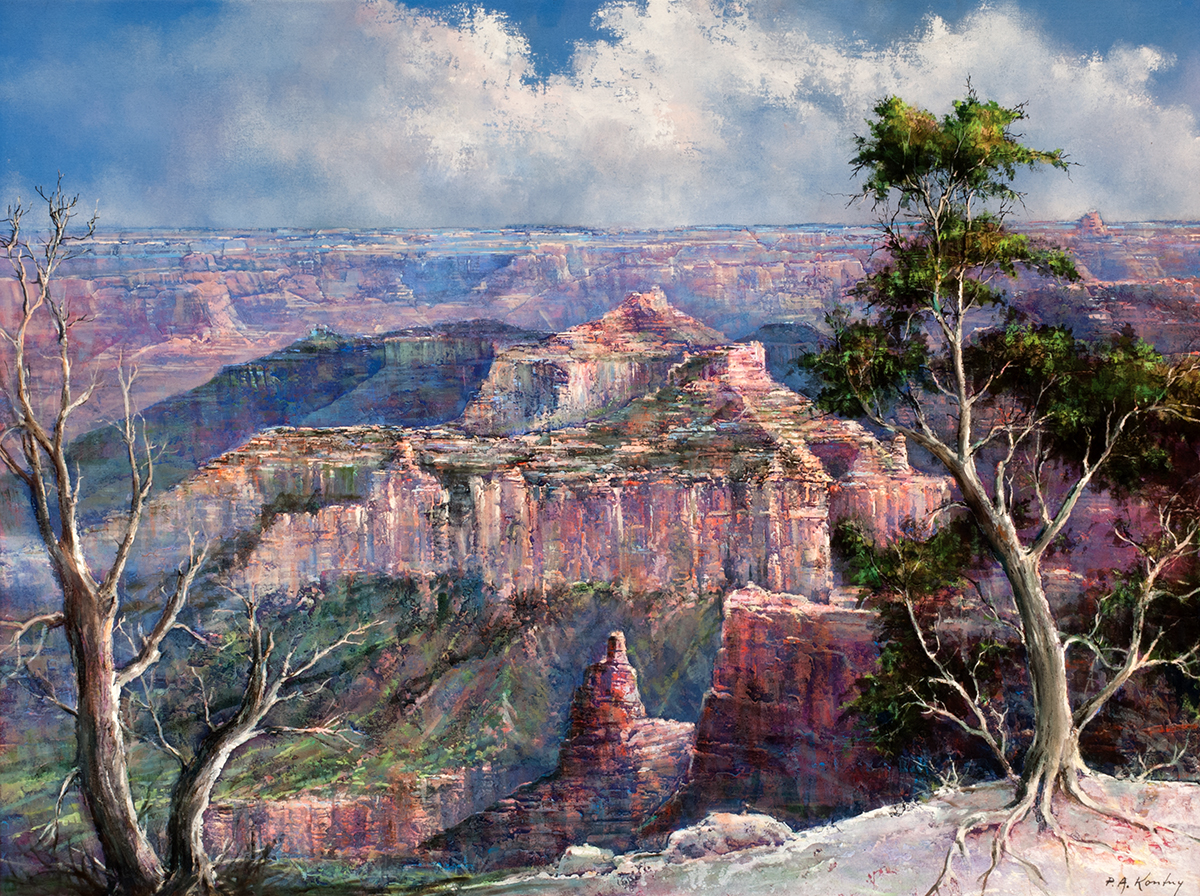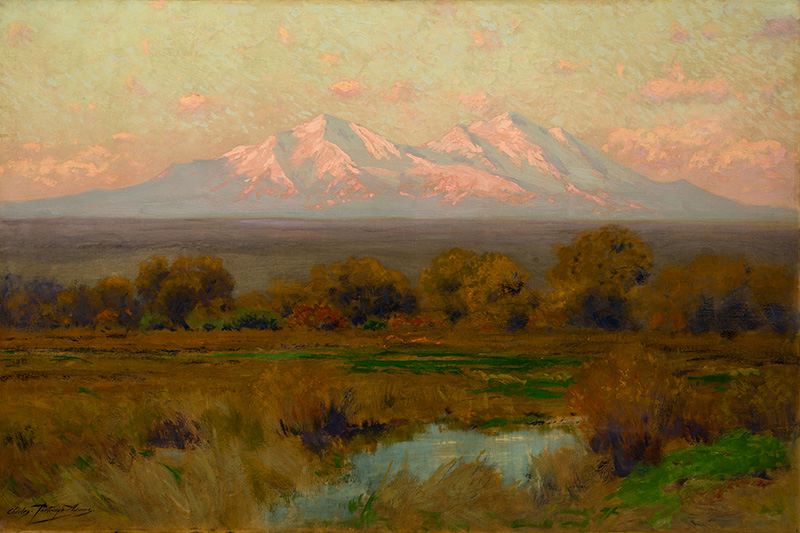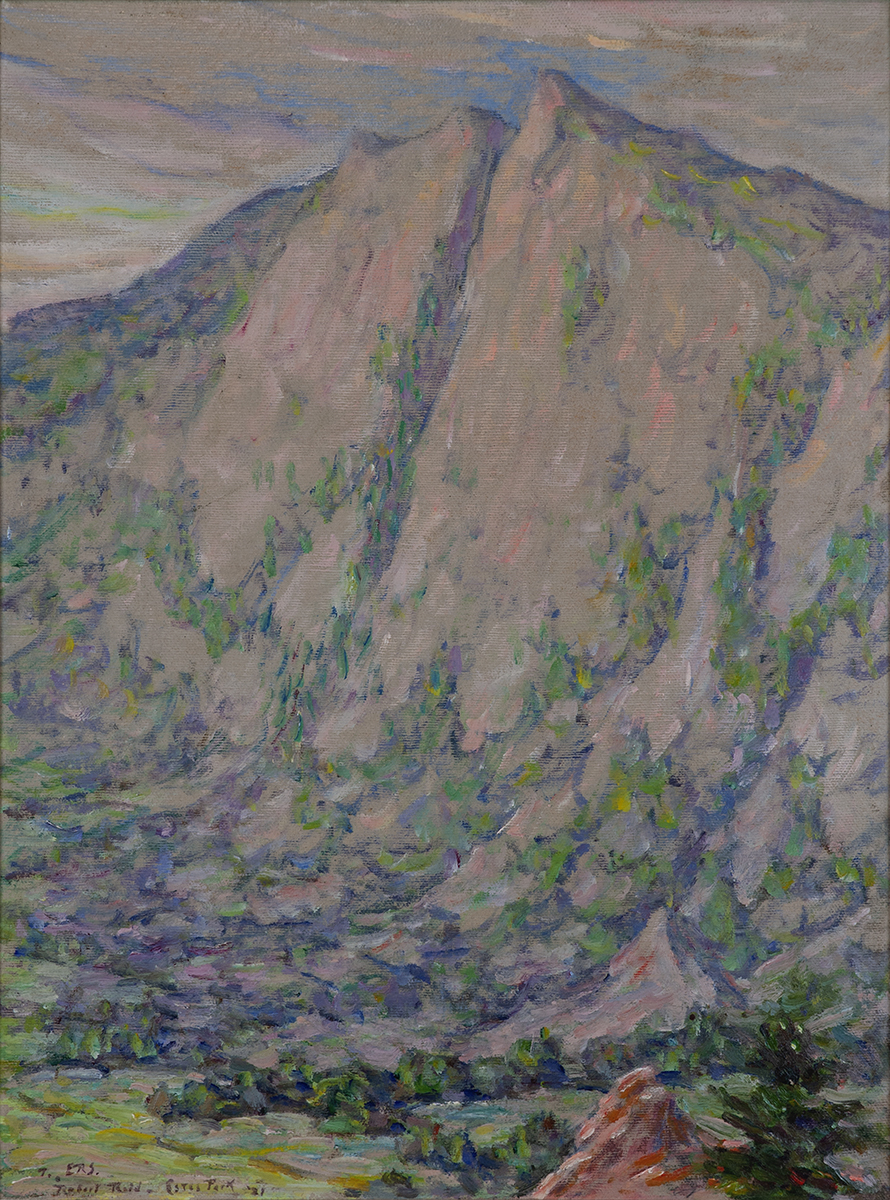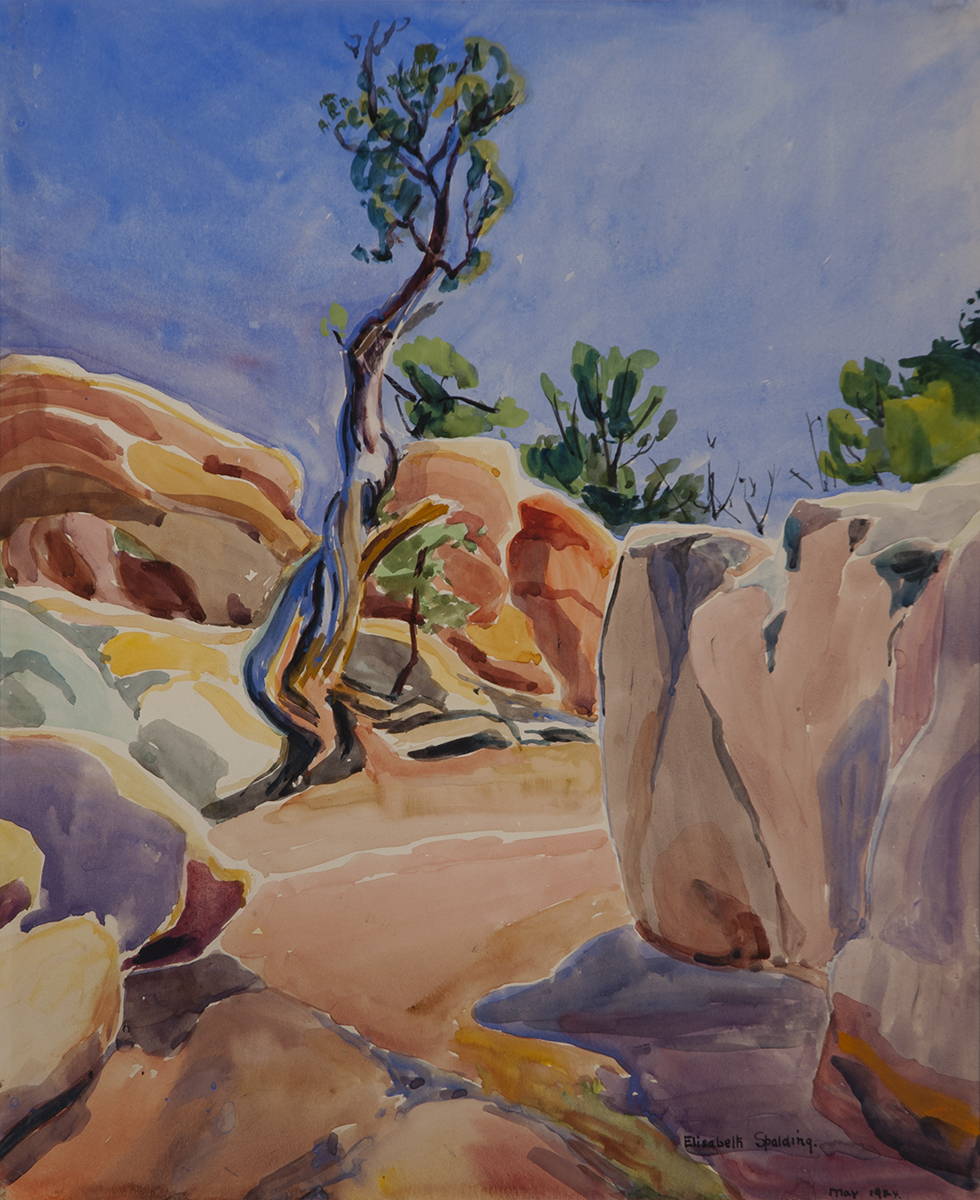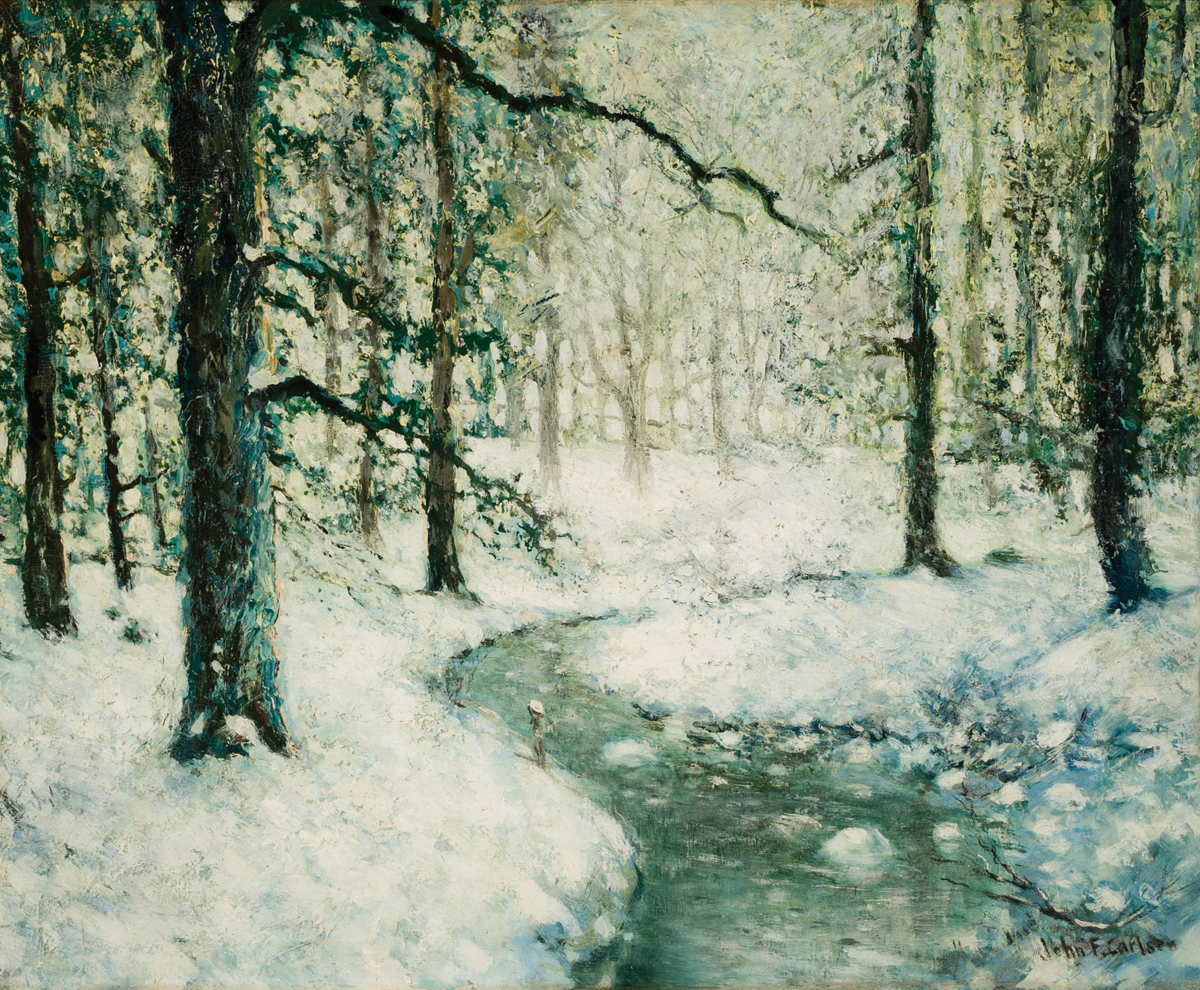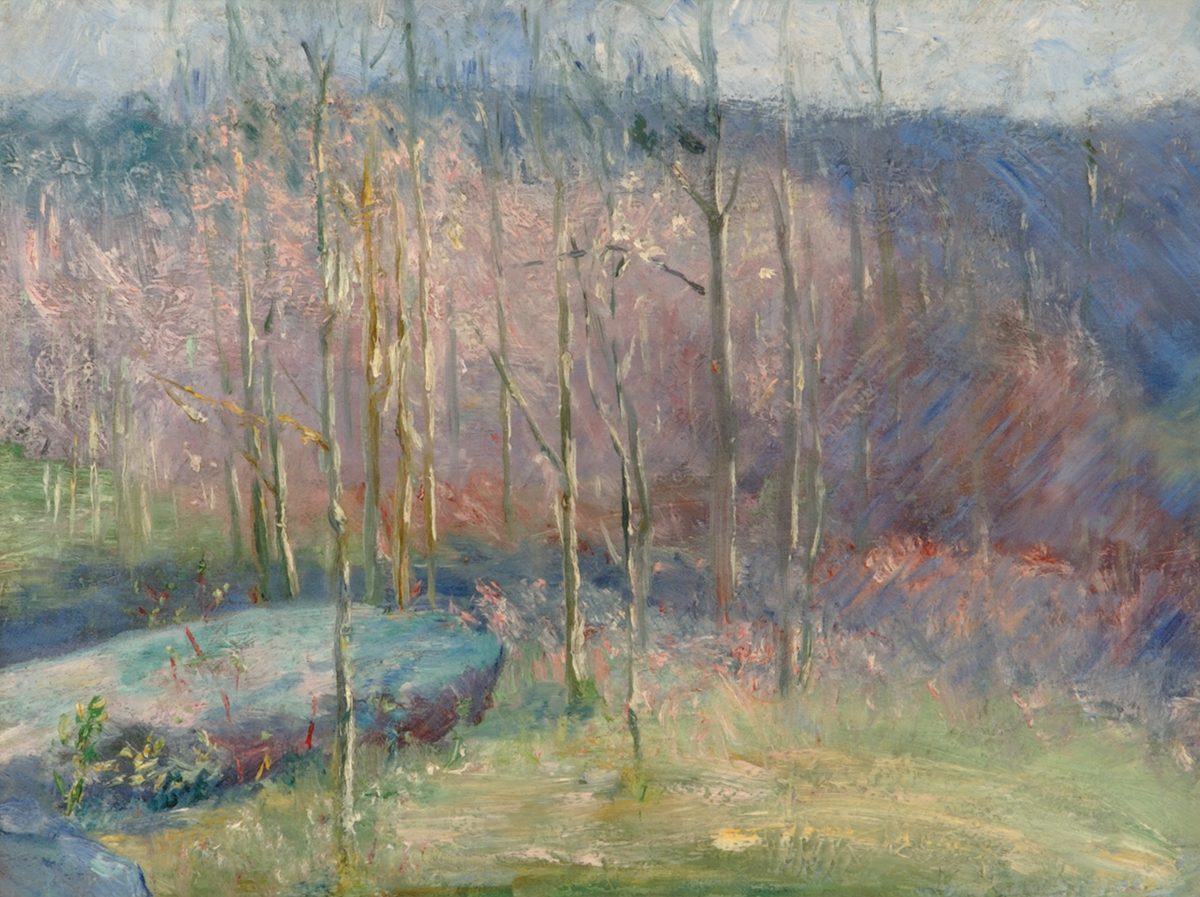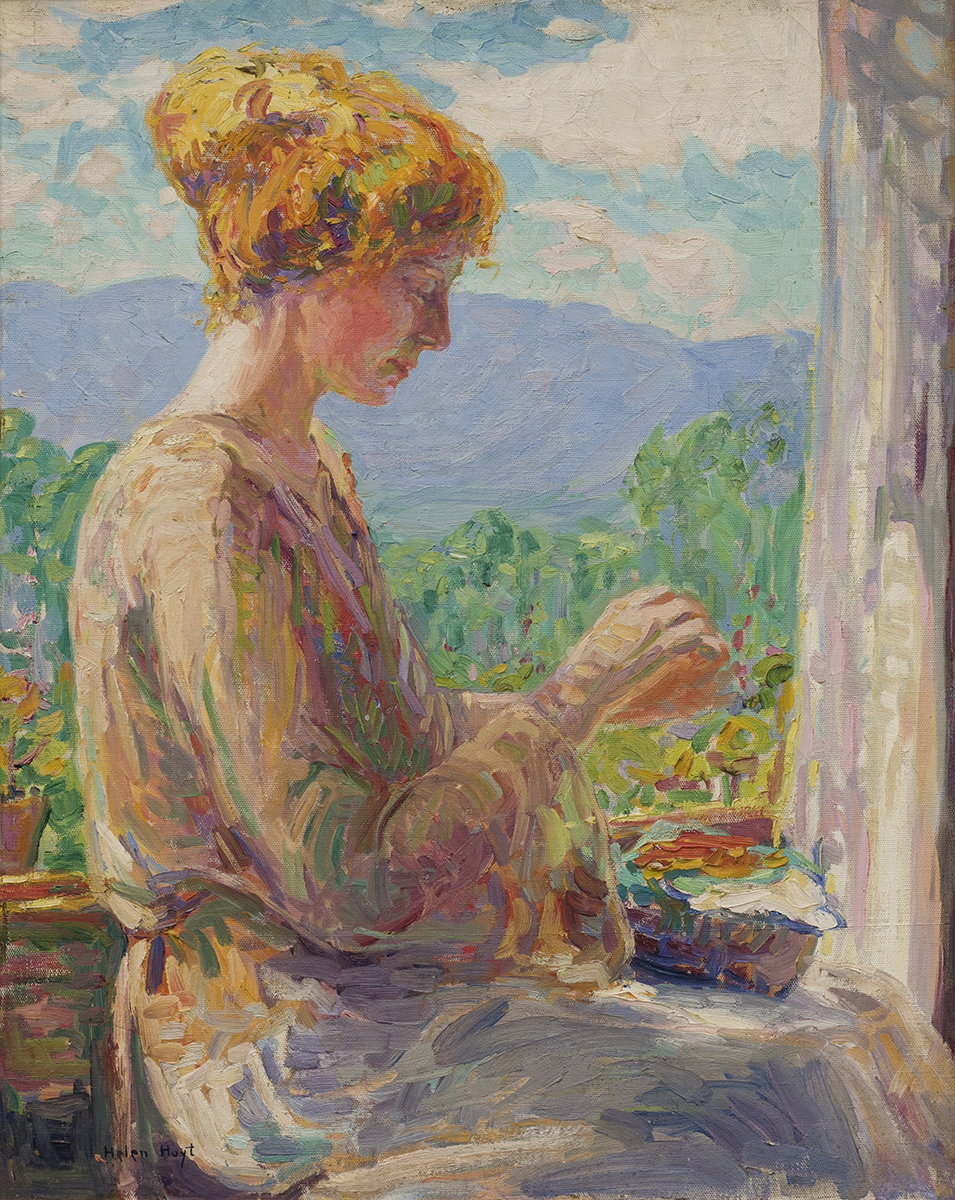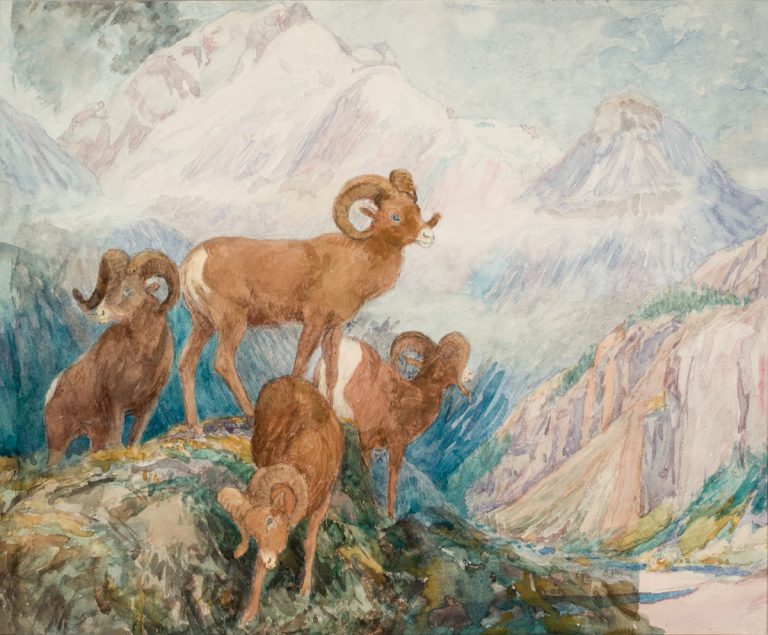
Big Horn Mountain Sheep
Year c. 1909
Artist Alexander Phimister Proctor (1860-1950, Canadian-American)
Media watercolor on paper
Dimensions 12 1/2 x 15 1/4 inches
Born in Arkonia (Ontario), Canada in 1860, Alexander Phimister Proctor is widely recognized for his western-themed monuments and animal sculptures at various locations throughout the United States. He based them on fieldwork sketches at local zoos and on his firsthand observations as an inveterate adventurer who enjoyed camping, overland trekking and big game hunting in Colorado, California, Montana and Canada. An accomplished painter, he likewise depicted buffalo, elk, bears and mountain lions, and also did some portraits. His painting of big horn mountain sheep reflects his connection to Colorado, as the Rocky Mountain bighorn sheep is its state animal. During his childhood his family moved first to Michigan, then to Newton and Des Moines, Iowa and finally to Denver in 1871 when he was 11 years old. With his father’s encouragement, he began art lessons in wood engraving in 1873 with J. Harrison Mills, a Buffalo, New York artist who had relocated to Denver the previous year for his wife’s health.
Proctor’s first published work comprised 32 engravings for Sheriff D.J. Cook’s book, Hands Up; Or, Twenty Years of Detective Life in the Mountains and on the Plains (1882). Through Denver artist Helen Chain, Proctor met Charles Partridge Adams—who became Colorado’s premier 19th century landscape painter—and the two men embarked on a three-month camping and sketching trip to Egeria Park in Routt County, Colorado. Following their return to Denver they shared a studio for a time before Proctor moved to New York in 1885 to study at the National Academy of Design. Two years later he transferred to the Art Students League and met sculptor John Rogers under whose tutelage he produced a model of the Fawn shown at the Century Club in New York. After attending an exhibition of bronze works by the master French animalier sculptor Antoine-Louis Barye at the American Art Association in 1889, Proctor devoted his talent to sculpting animals. In 1893–1894 he studied French methods at the Académie Julian in Paris, winning first prize for his Boxer-Pug at the school’s annual sculpture competition.
In 1893, 37 pieces of his sculpture for the World’s Columbian Exposition in Chicago were awarded a Designer Medal. His work also was included in other national and international exhibitions: the Paris Universal Exposition (gold medal, 1900); Pan-American Exposition in Buffalo, New York (bronze medal for watercolor, 1901); Louisiana Purchase Exposition, St. Louis, Missouri (gold medal, 1904); Alaska-Yukon-Pacific Exposition, Seattle, Washington (1909); Panama-Pacific International Exposition, San Francisco, California (gold medal, 1915) and the British Empire Exhibition, Wembley, England (1924). During his career he also participated in group exhibitions at the Paris Salon; Whitney Museum of American Art, National Academy of Design, Century Club, Babcock Gallery, Grand Central Art Galleries, American Museum of Natural History, and Columbia University—all in New York; Canadian Art Club—Toronto; Los Angeles County Museum and the Bohemian Club—San Francisco.
In 1920 his Bronco Buster was dedicated in Denver’s Civic Center Park, followed by On the War Trail in 1922 where they can still be seen. Over the next 20 years he received commissions for several large monuments: Pioneer Mother (Kansas City, Missouri), General Robert E. Lee (Dallas) and Mustangs (University of Texas at Austin). He likewise modeled the horses for the Logan Monument in Chicago and the Sherman Monument in New York created by eminent American sculptor, Augustus Saint-Gaudens. Elected a full member of the National Academy of Design in 1904, Proctor had one-man exhibitions of his work at the Montross Gallery (New York, 1908 and 1912), The Gorham Company (New York, 1913), Art Institute of Chicago (1917), Corcoran Gallery of Art (Washington, DC, 1918) and the Stendahl Art Gallery (Los Angeles, 1923). His autobiography, Sculptor in Buckskin, edited by his daughter, Hester Proctor, was published in 1971 by the University of Oklahoma Press. Proctor died at the age of 89, in Palo Alto, California.
ON VIEW in Art Nouveau Gallery 4
Signature Initialed "A.P.P." lower right
Credit Line Collection Kirkland Museum of Fine & Decorative Art
Accession Number 2011.0436

